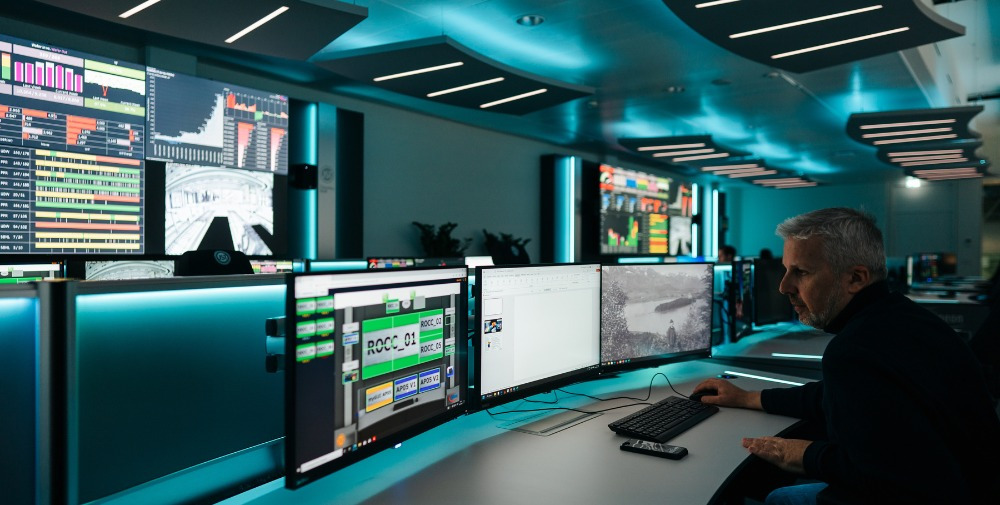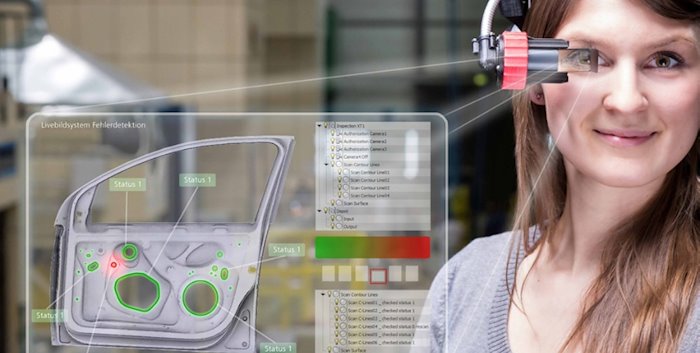Saxon players are also forging ahead with the trend toward the networked factory
Categories
Saxon players are also forging ahead with the trend toward the networked factory

Categories
Tags
Contact info
Silicon Saxony
Marketing, Kommunikation und Öffentlichkeitsarbeit
Manfred-von-Ardenne-Ring 20 F
Fax: +49 351 8925 889
Contact person:
Beyond the large automotive and electronics companies, more and more smaller industrial companies are now retrofitting their factories with “smart factory” solutions – and players from “Silicon Saxony” are playing a driving role in many cases. Growing international competitive pressure is the main reason why medium-sized companies are now retrofitting their factories with such technologies, even some of them several decades old. Suppliers of such “smart factory” concepts, such as Forcam from Ravensburg, or industry organizations such as the Institut für angewandte Arbeitswissenschaft (Institute for Applied Work Science) from Düsselsdorf, Germany, are in some cases claiming productivity increases of around 30 percent as well as considerable savings in operating costs, energy and material consumption.

With AR data goggles, employees in a press shop recognize possible component defects in good time through intuitive data analysis – and can intervene. A “Smart Factory” example scenario from the Fraunhofer Institute for Machine Tools and Forming Technology (IWU) Chemnitz. | Visualization: IWU Chemnitz
High-tech companies and institutes in Saxony have been building specialized but quite strong competitive positions in this sector for several years: in the production of robust and low-cost “intelligence” hardware as well as sensor technology for smart factories, in data analysis, in machine learning, but also through the agile design of innovative initial solutions. They often act as an interface between German industry and the “hyperscalers” overseas. This is according to assessments by the Smart Systems Hub Dresden, the German digital industry association “Bitkom” from Berlin and other industry representatives. “Saxony has built up considerable expertise in this area over the past two or three years,” says Managing Director Michael Kaiser of the Smart Systems Hub innovation network in Dresden. “A strong ecosystem is growing up here.”
To better classify this, however, it’s first worth asking:
Often, “Smart Factory”, “Industry 4.0” or “Industrial Internet of Things” (IIoT) are used almost synonymously and sometimes just as a mere promotional label. In fact, there is no generally accepted definition for smart factories, but there are many overlaps between the terms.
“Industry 4.0,” for example, is a concept strongly influenced in Germany that is more oriented toward machines and automation and aims, among other things, to be able to productively manufacture even “batch size 1.”
The “Industrial Internet of Things” has stronger roots in the USA and is characterized by the idea of mapping components, products and products as a networked chain in order to generate new digital business models.
“Smart factories” on the other hand, are (in the ideal case and final expansion):
(Sources: Bitkom, Smart Systems Hub, Fraunhofer IVI)
Finding a factory that fully meets all these criteria, however, is likely to be difficult. While there has been talk of “robot factories,” “dark fabs,” “cybernetic factories,” “Industry 4.0” and similar concepts for many years, they have been difficult to get running stably in practice.
“This is precisely where Saxony has made considerable contributions recently”
(Michael Kaiser, managing director, Smart Systems Hub)
“The companies here have made the electronic hardware for smart fabs really affordable and robust.” Of course, this doesn’t just apply to the circuits, sensors and data analysis tools from the Free State; the major European suppliers of automation technologies have also made great strides recently, bringing more mature solutions to market – both for monolithic, new large-scale factories and for an evolutionary diffusion of “Industry 4.0” and “smart fab” technologies into smaller-scale industry.
“We have been observing two paths to smart factories for some time now,” says “Industrie 4.0” expert Angelina Marko of the Berlin-based German digital industry association “Bitkom.”
“On the one hand, we have large companies that are building entirely new smart fabs on greenfield sites. Everything there is then geared toward digitization and networking right from the start. And on the other hand, many small and medium-sized machine builders are now upgrading step by step: they are retrofitting sensors to their machines, expanding the IT technology and networking them with the cloud.” (Angelina Marko, Head of Industry 4.0 & Technical Realization, Bitkom)
This means that German SMEs – which have long been rather hesitant when it comes to digitization – are now finally moving more and more clearly in the direction of more automated and also “intelligent” factories.
This is in line with Michael Kaiser’s observations: “My impression is that there are two parallel developments in smart factories: The large companies are in the process of bringing together their robots, Automated Guided Vehicles, additive manufacturing systems and other automation technology in such a way that it becomes an intelligent overall model. Medium-sized companies, on the other hand, are currently concentrating on gradually digitizing individual processes, especially workplaces with particularly monotonous activities, and providing them with ‘intelligence’, thus gradually taking a different path to a smart factory. In many cases, the drivers here are growing competitive pressure, the shortage of skilled workers, but also the desire for greater resilience and energy savings.”
Both development paths can also be found concretely in Saxony. Here are examples of evolutionary solutions as well as the “greenfield” concept:
Innovators from Globalfoundries, T-Systems MMS, Deltec, Zeiss and the Smart Systems Hub have designed a sensor kit and evaluation algorithms that can be used to predict possible future failures of wafer transporters in a chip factory. First developed for Globalfoundries, the group is currently transferring this concept to Infineon’s Dresden fabs.
An innovation swarm has developed a digital “doc” that monitors the “state of health” of mobile Hero robots from Fabmatics Dresden in cleanrooms using fused sensor data streams. Again, the Dresden innovators designed the architecture so that this system can now be transferred to immobile warehouse robots in logistics.
Automation manager Frank Bönewitz and ramp-up manager Lutz Herrlich plan Infineon’s No. 4 factory module in Dresden according to smart fab criteria from the outset. This includes, for example:

Control station at the Infineon fab in Villach. A similar control station is to be built at the new Infineon fab in Dresden. | Image: Infineon
The level of automation in the future Infineon Factory 4 in Dresden will reach almost 100 percent in some sectors. “That means: theoretically, we could turn off the lights in these sections during normal operation and make it a dark fab,” Bönewitz is convinced. “However, we won’t do that – if only because people are needed for maintenance after all. But the robots and equipment themselves would not need visible light.”
The idea of a “dark factory” (“Dark Fab”) is already several decades old, dating back to the time of the cybernetics euphoria in the 1960s. Even back then, the idea was that highly automated, human-less factories, in which only robots and other machines work and artificial intelligences autonomously decide the optimal manufacturing path to the desired end product, can save a lot of energy by simply turning off the lights and heating. Humans only need to enter if something has gone wrong.
But in fact, fidget-proof industrial operations have never caught on. And even in the foreseeable future, only selective dark-fab solutions are to be expected. For example, there are unconfirmed reports that some factories in China full of 3D printers are actually already being operated without light. But complex manufacturing processes still require at least occasional human corrective intervention. “In my opinion, there will be no consistently dark factories,” Bitkom expert Angelina Marko is convinced. “Every process chain must somehow ultimately be monitored by humans, there must always be a human person in charge. Automation will undoubtedly increase in the wake of the smart fab trend and we will see more and more robots in companies – but humans will always be there in some form.”
A smart factory will always remain an isolated solution and will not realize its full efficiency potential unless it becomes part of end-to-end digital value chains. In particular, the severe global supply chain disruptions caused by Corona, multiple factory fires, blocked waterways, natural disasters and trade wars have given new impetus to the debate on resilience, multi-source approach and supply chain transparency. Added to this has been pressure from new supply chain legislation and other regulatory requirements.
Among other things, this has led to the gradual growth of a trusted environment in the automotive industry since 2020 with “Catena-X”: a collaborative data ecosystem led by BMW. This is a set of rules docked to “Gaia-X” – a “federated data infrastructure that stands for European values, digital sovereignty of data owners, interoperability of different platforms and open source,” according to André Rauschert of the Fraunhofer Institute for Transportation and Infrastructure Systems (IVI) Dresden. Catena-X is intended to provide more transparency in supply chains and simpler but secure data exchange between the participating car manufacturers and suppliers.
“In the automotive industry, Catena-X already works quite well and new partners are joining all the time,” assesses André Rauschert. “This gave rise to the idea that mechanical engineering also needs something like this.” The concept is called “Manufacturing-X” and is also intended to use Gaia-X, but so far it essentially consists only of a position paper, a steering committee and a basic structure. The goal here is also an “open, decentralized and collaborative data space for Industry 4.0.” Mechanical engineering is to act as a pioneer this time. Other industry solutions, for example for the chemical and pharmaceutical industries, are also being considered. However, unlike in the German automotive industry, which is dominated by a handful of large car companies with great market power, it is already much more difficult in the medium-sized German mechanical engineering sector to agree on common standards and find a consortium leader that is accepted by all sides.
The advantages of a sovereign European data ecosystem in which data can be exchanged in a legally secure manner and which digitally maps entire supply chains and makes them transparent are, of course, obvious for SMEs: On the one hand, this is a viable way to meet the requirements of the Supply Chain Act. On the other hand, in the best case, countermeasures can still be taken in good time if a serious disruption “eats its way” through a supply chain.
In addition, it may only be through such an ecosystem that a German SME can see how crisis-proof its resilience efforts really are. Example: A mechanical engineering company has secured several sources of supply for the control units of its machines. With Manufacturing-X, for example, it could then become apparent that all the different suppliers ultimately only use chips from TSMC. So if the supply from Taiwan fails, even the selected multi-source approach is of little use in this case. The midmarket company could then use Manufacturing-X to look for alternative control units based on other circuit sources.
Author: Heiko Weckbrodt for Silicon Saxony
_ _ _ _ _
👉 Catena-X